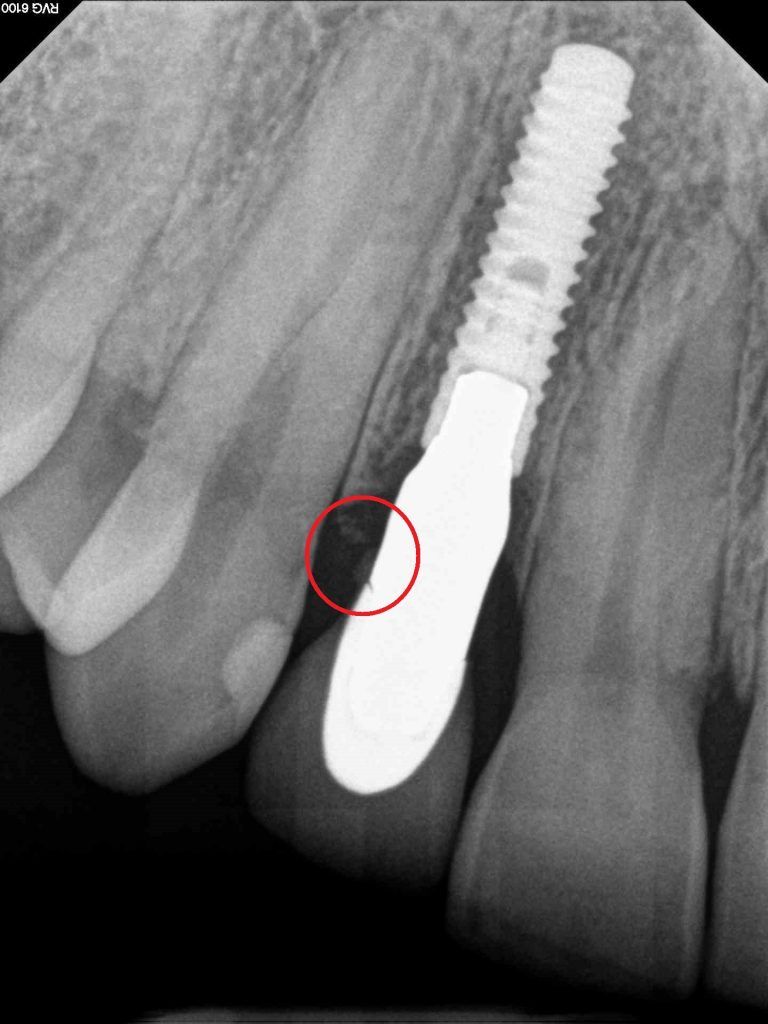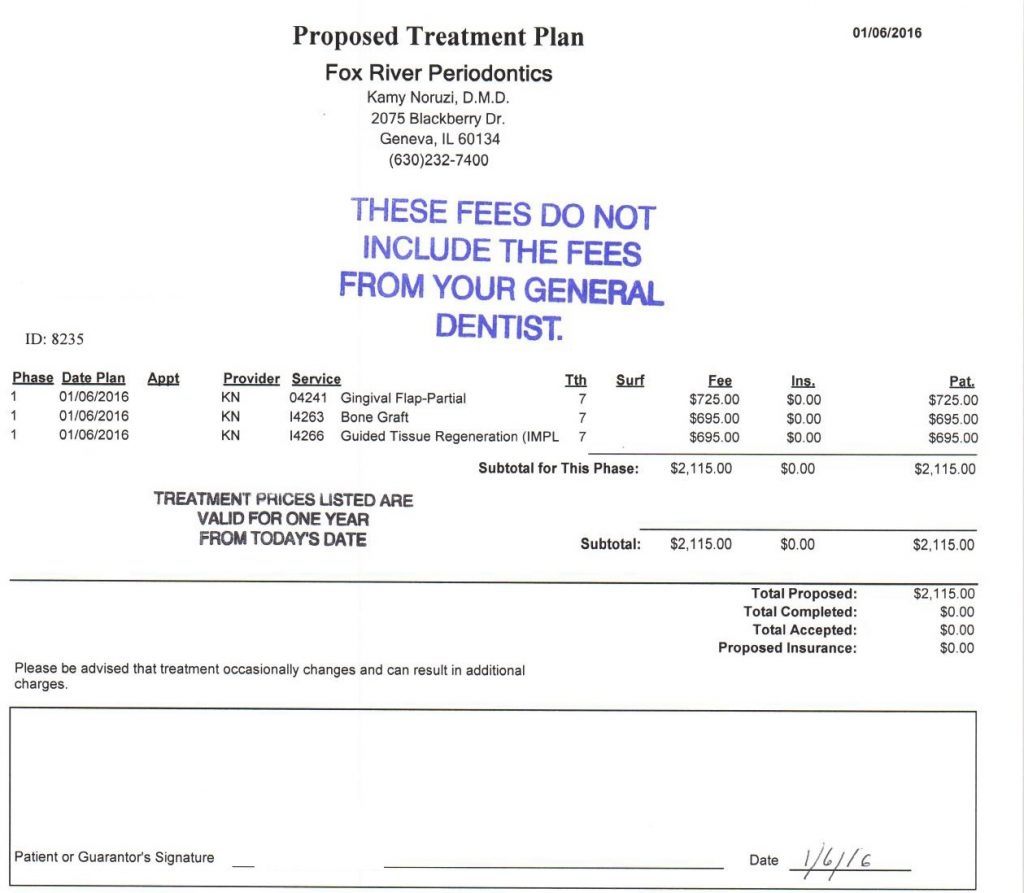Dental code cement sepsis – What do I charge?
There are two ways you could remove the cement from a dental implant. One way is to flap the area and fully debride the area. The other way it to access the screw and remove the crown/abutment as one piece and clean it extra-orally.
If an implant is losing bone and was cemented on the first thing that should come to mind is cement sepsis. For years the dental industry has sold dental implant cement that was resin. I think that is the worst choice. It flows like water before set. It is radiolucent. It is very difficult to remove. It is almost like the cement was designed to cause cement sepsis.
Dental code cement sepsis removal via incision and debridement
A flap is placed and the cement is cleaned off. The steps involved would depend on the amount of bone damage that has already occurred. The steps would be the same as the treatment of peri-implantitis and can be found on the previous link. This method would be more favorable to those that do not do restorative work. It also would be used if implant lost some bone and you want to try to restore that bone.
Proper dental codes for cement sepsis that could be used when doing it surgically include:
D6101 – debridement of a peri-implant defect or defects surrounding a single implant, and surface cleaning of the exposed implant surfaces, including flap entry and closure
D6102 – debridement and osseous contouring of a peri-implant defect or defects surrounding a single implant and includes surface cleaning of the exposed implant surfaces, including flap entry and closure
D6103 -bone graft for repair of peri-implant defect – does not include flap entry and closure
D6199 – Unspecified implant procedure, by report
You can bill like the following example. I guess this might be somewhat fair if you had nothing to do with the dental implant. I found this fee to be outrageous for an implant placed by the doctor and restored by one of his referrals. This would be done for free in almost every office in the country. Plus those codes are not for dental implants. Sorry, just a rant.

The cement is circled in red. Deep implant placement with no bone damage. This was the case that the above bill generated.
Dental code cement sepsis removal via crown/prosthesis removal
This would be almost identical to my dental code loose implant screw.
This is fairly straight forward and not that different from endodontic access. The main thing to watch out for is implants in less than ideal position. A CBCT would allow you to know if the implant is in the center of the crown or not. Probing and PA could give you a really good idea and is arguably just as good. If it’s an anterior crown and esthetics are very critical then take the CBCT. This method would be more favorable to those that do not do surgical work. It also would be used if implant hasn’t lost any bone or the esthetics of the access are not critical.
Proper dental codes for cement sepsis that could be used when doing it prosthetically include:
- D6080 – Implant maintenance procedure when removed and reinserted, includes cleaning of prosthesis and/or abutment
- D6199 – Unspecified implant procedure, by report
To see a couple cases of cement sepsis being repaired click the link.
Should you replace a loose screw?
In the perfect world you would replace the screw. A loose screw should definitely be replaced, as it has been undergoing flexure back and forth. If you are removing the screw and know it was tight, reusing the same screw is probably just fine.
Should you charge to remove cement around a dental implant?
Not if it’s your work! If you made the mess you owe it to the patient to clean it up. If it is a referral of yours, I don’t think you should charge. The doctor that did it needs to be educated on how to do screw-retained, screwmentable, or how to cement implant crowns properly. That is debatable, but what are you going to say the problem is? Your restorative doctor screwed up?
The post Dental code cement sepsis appeared first on Wheaton Dentist, Orthodontist, Pediatric Dentist.


No comments:
Post a Comment